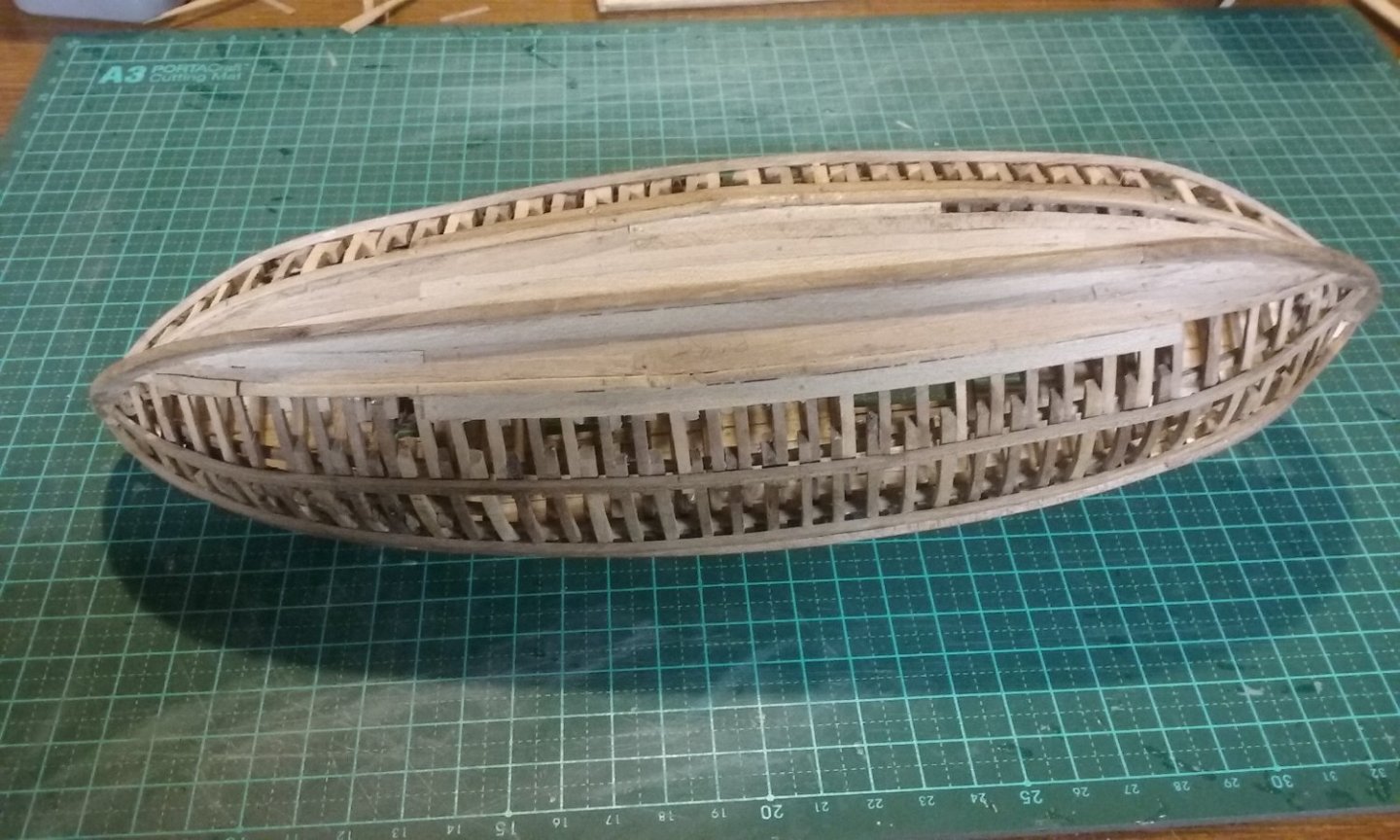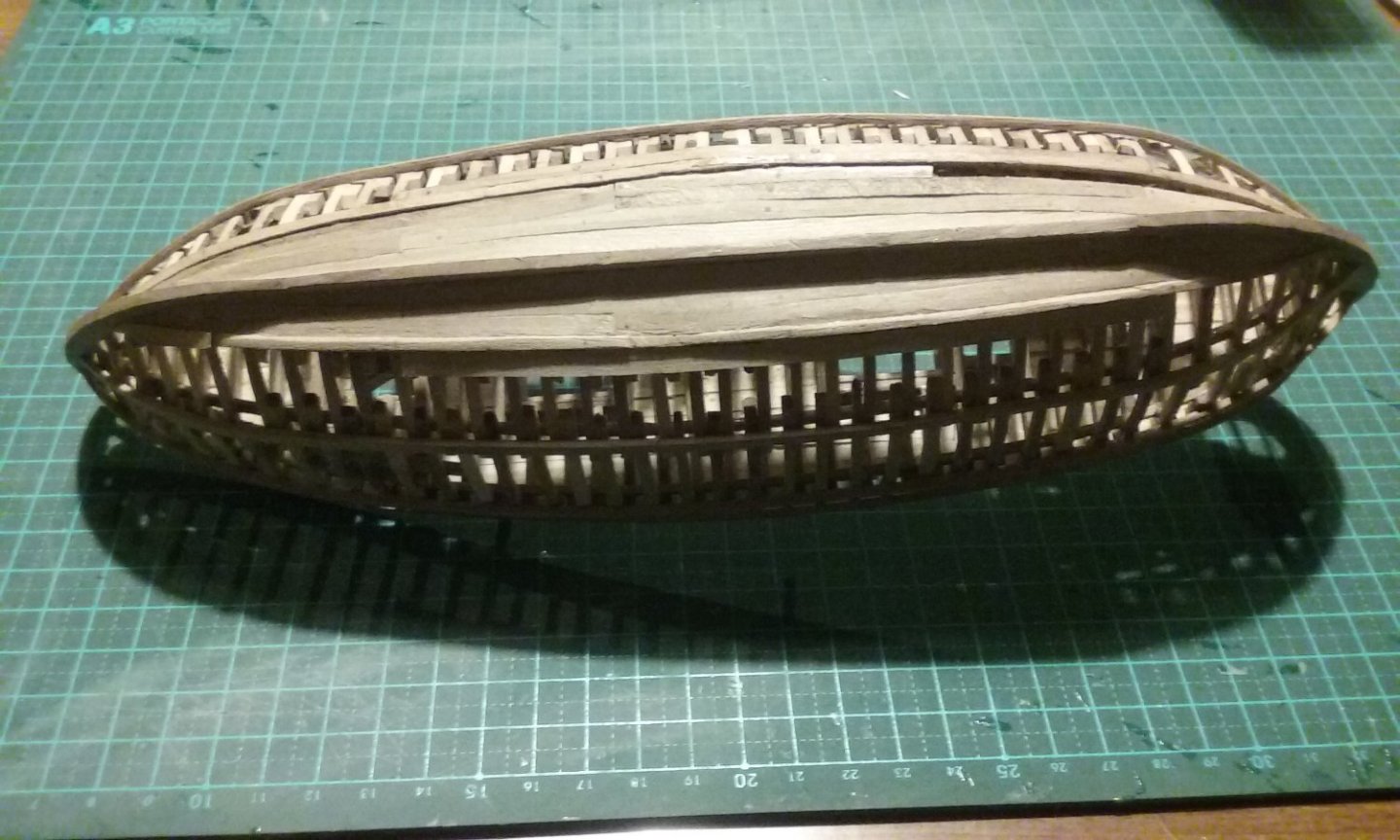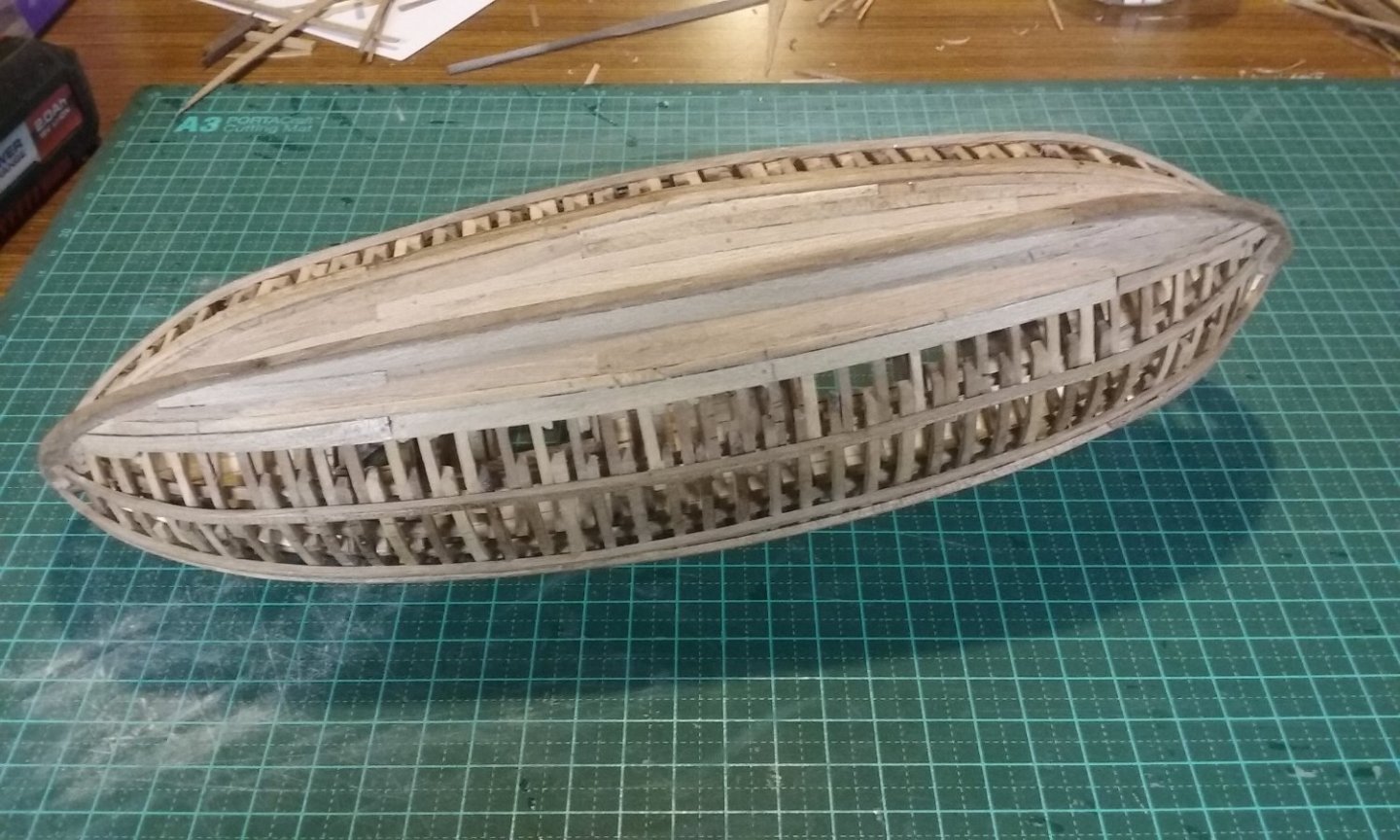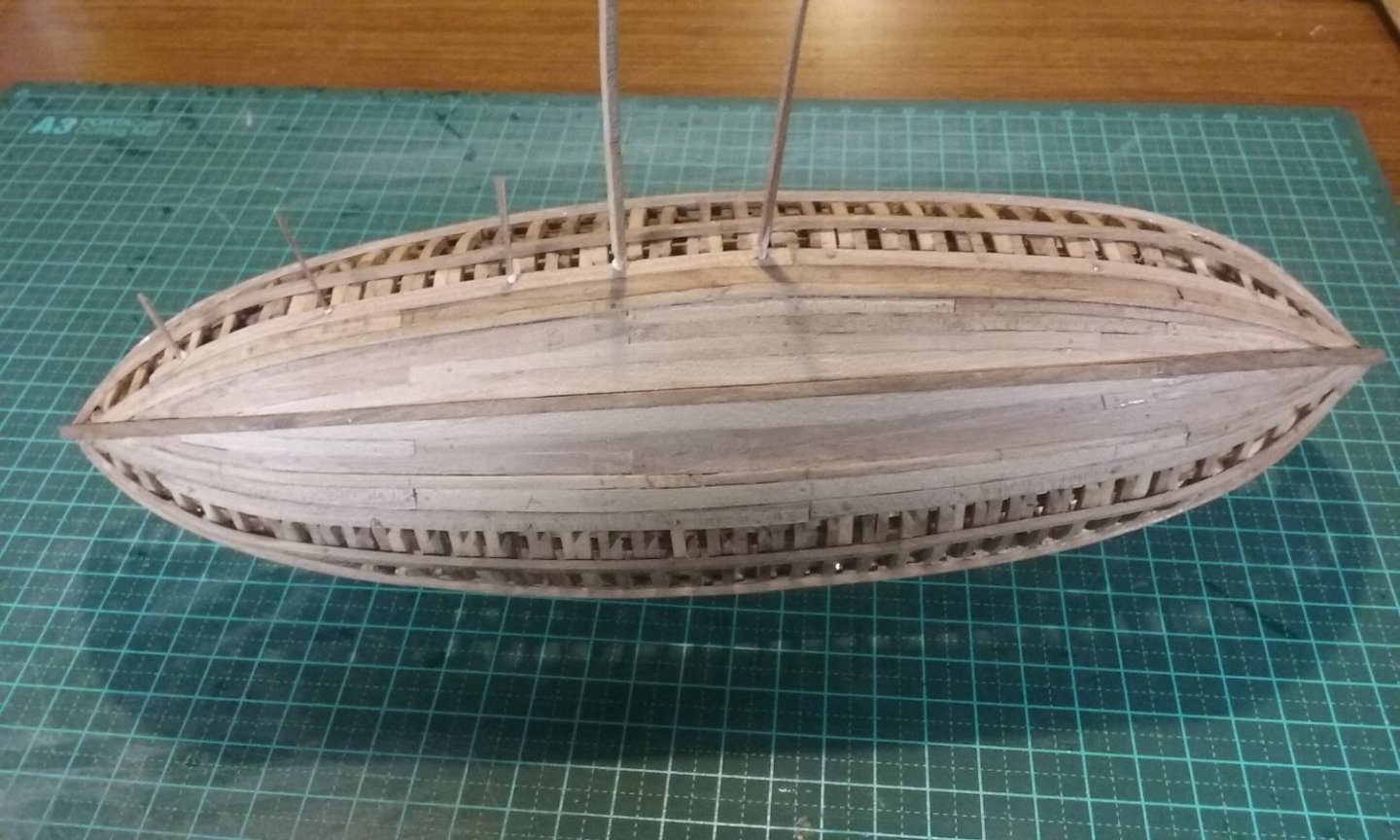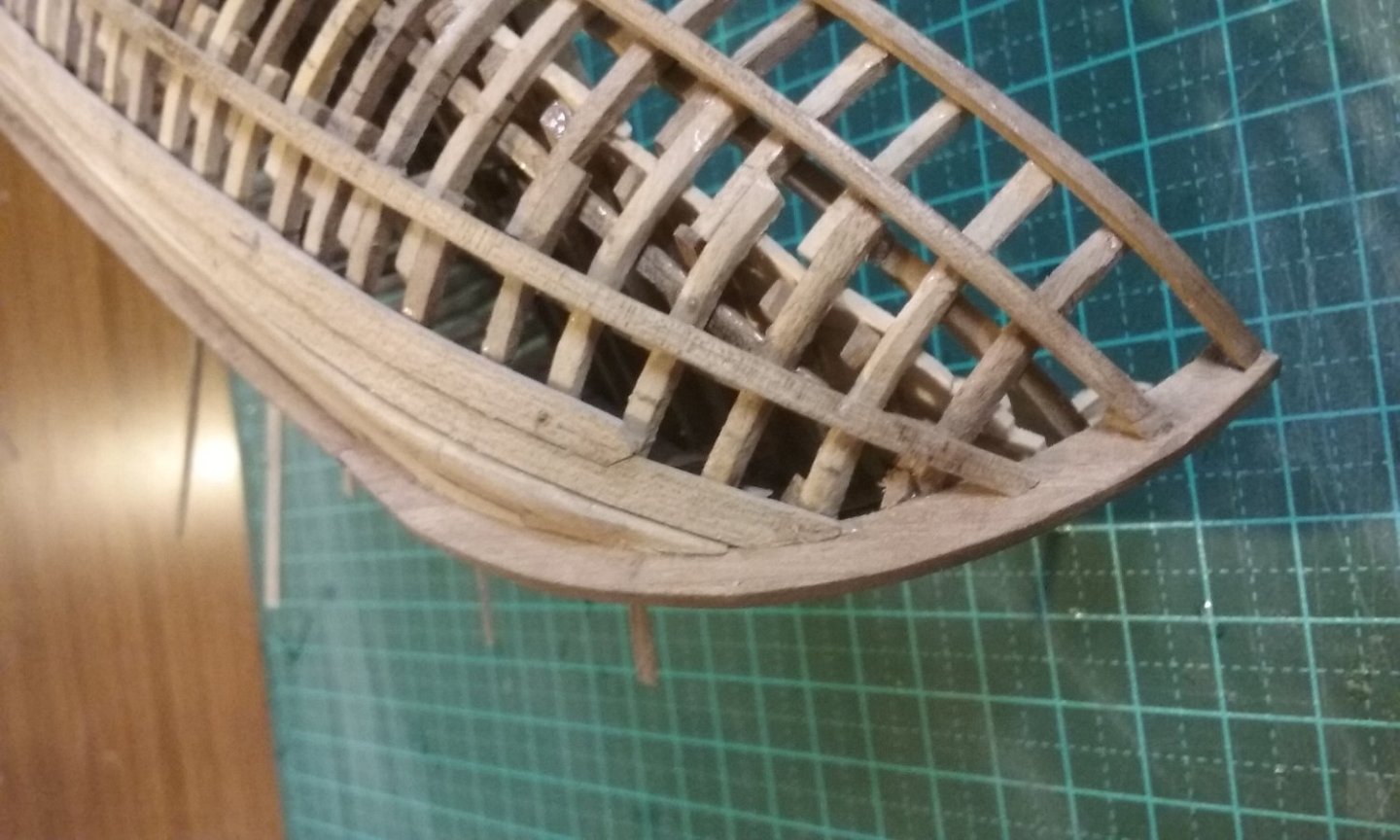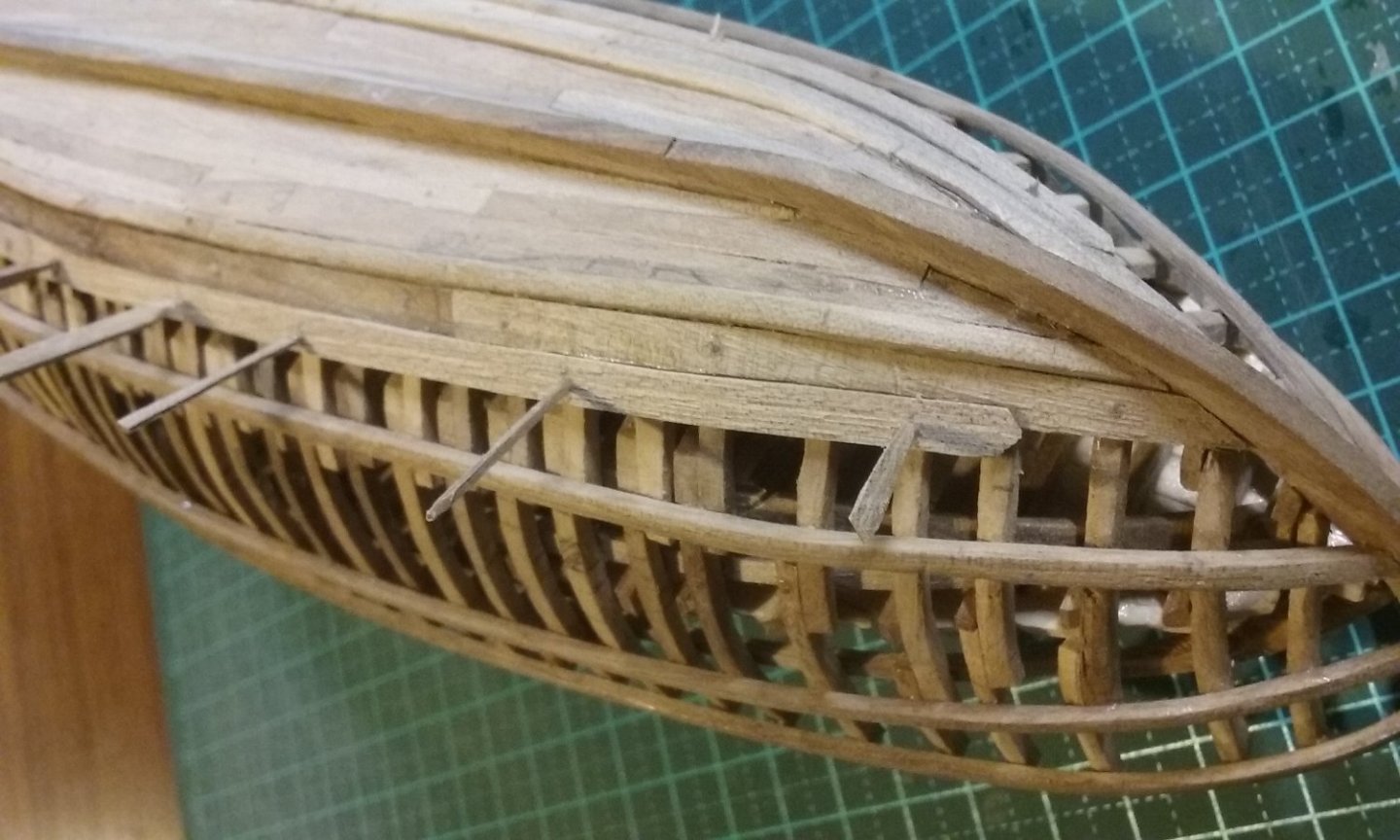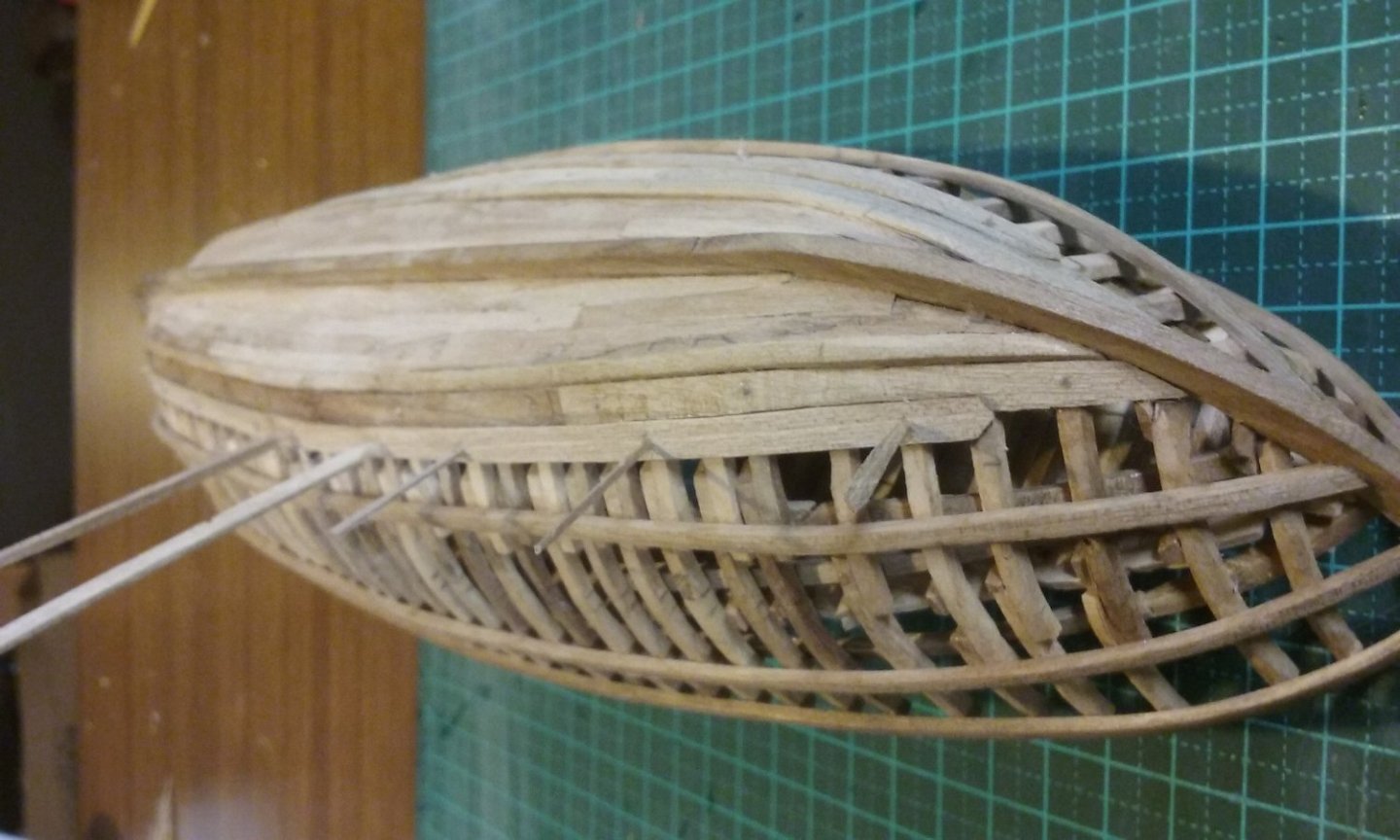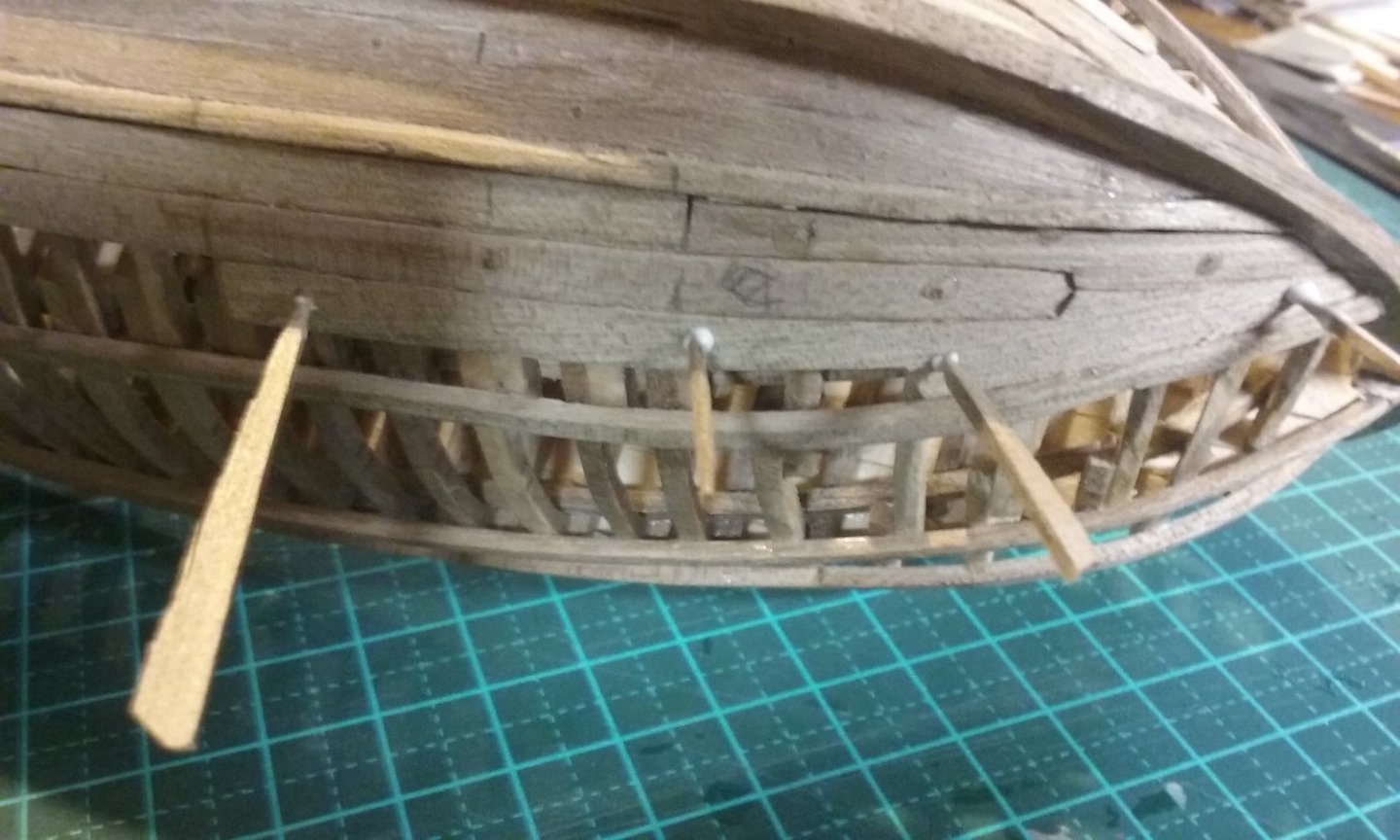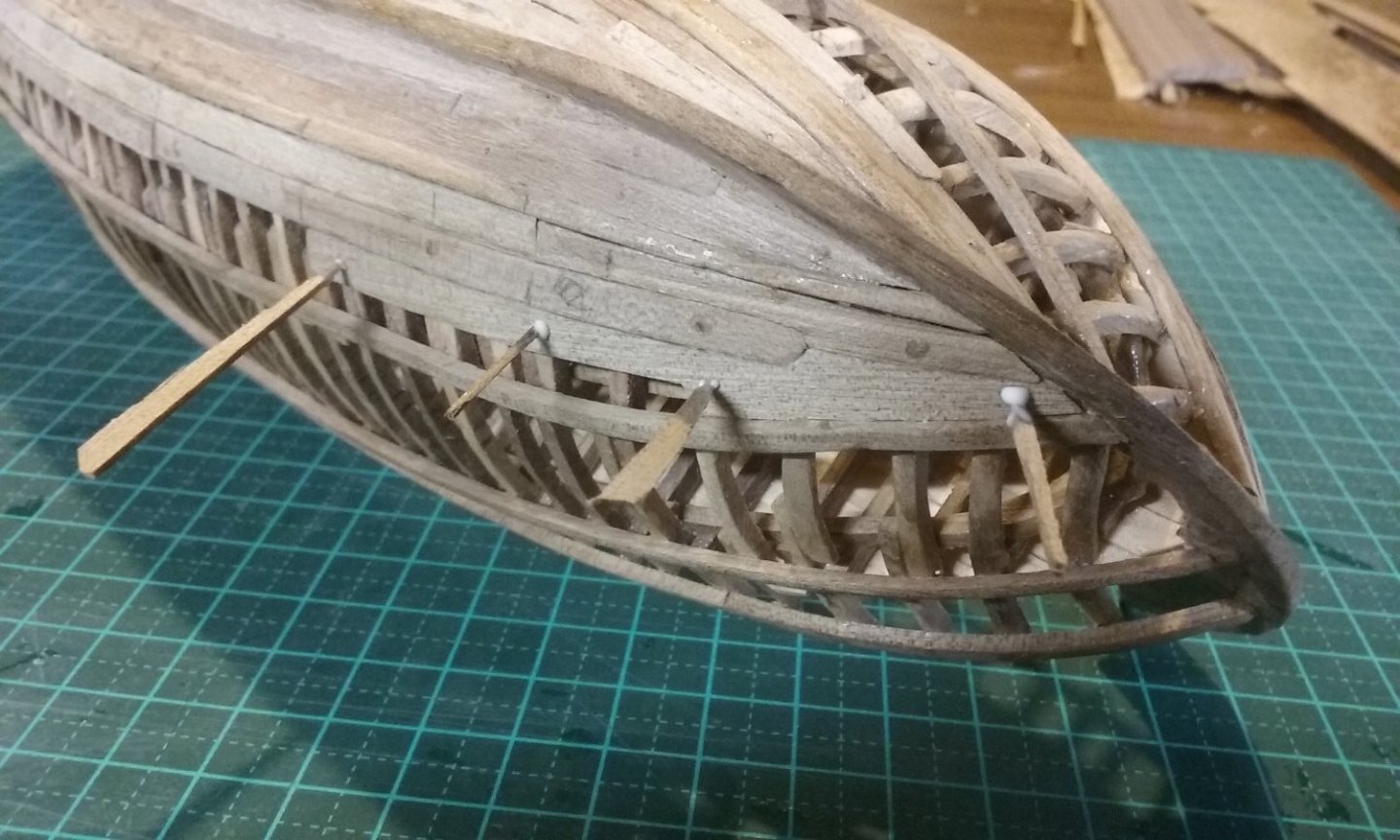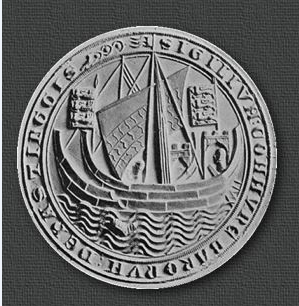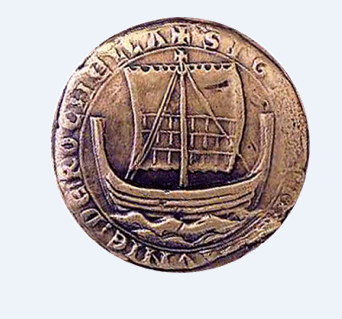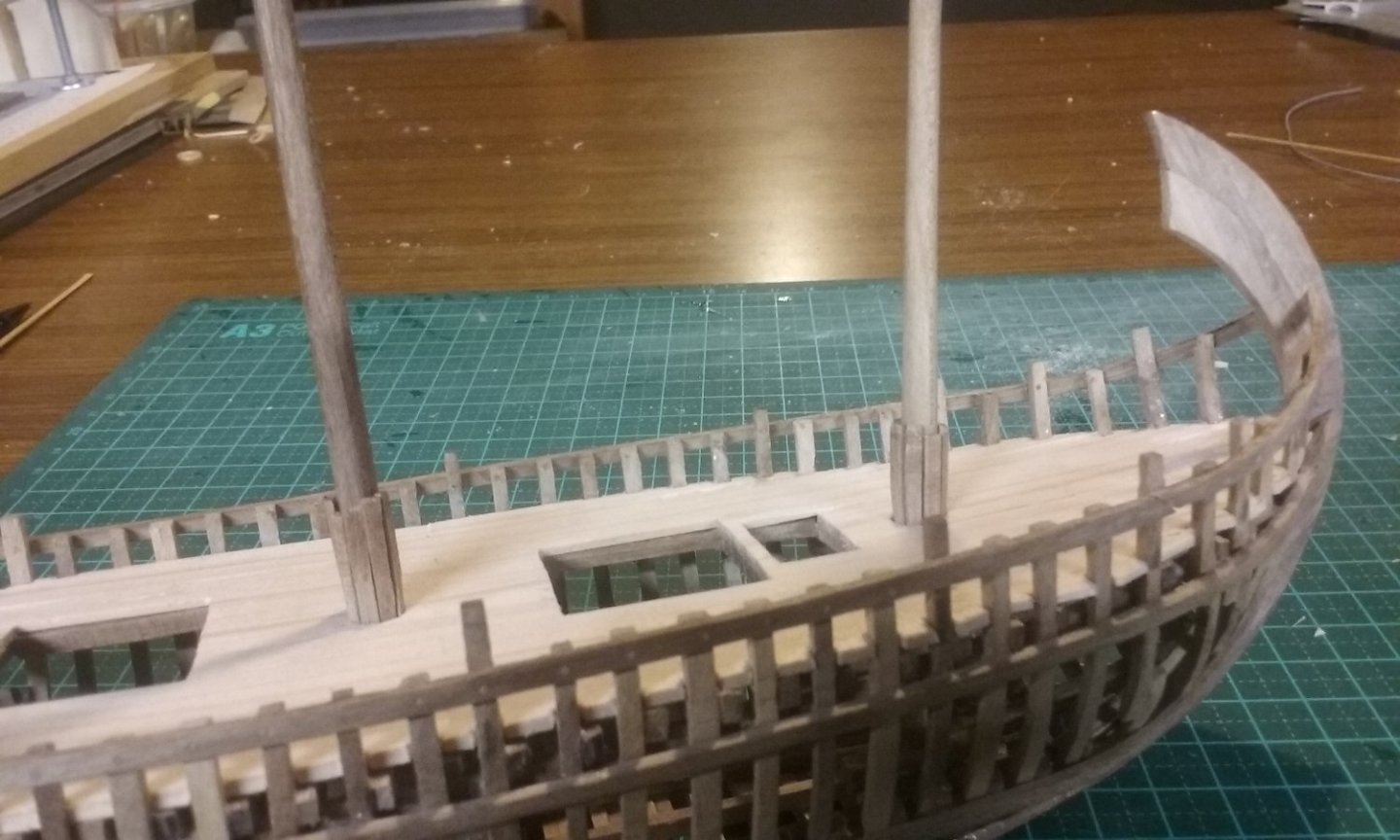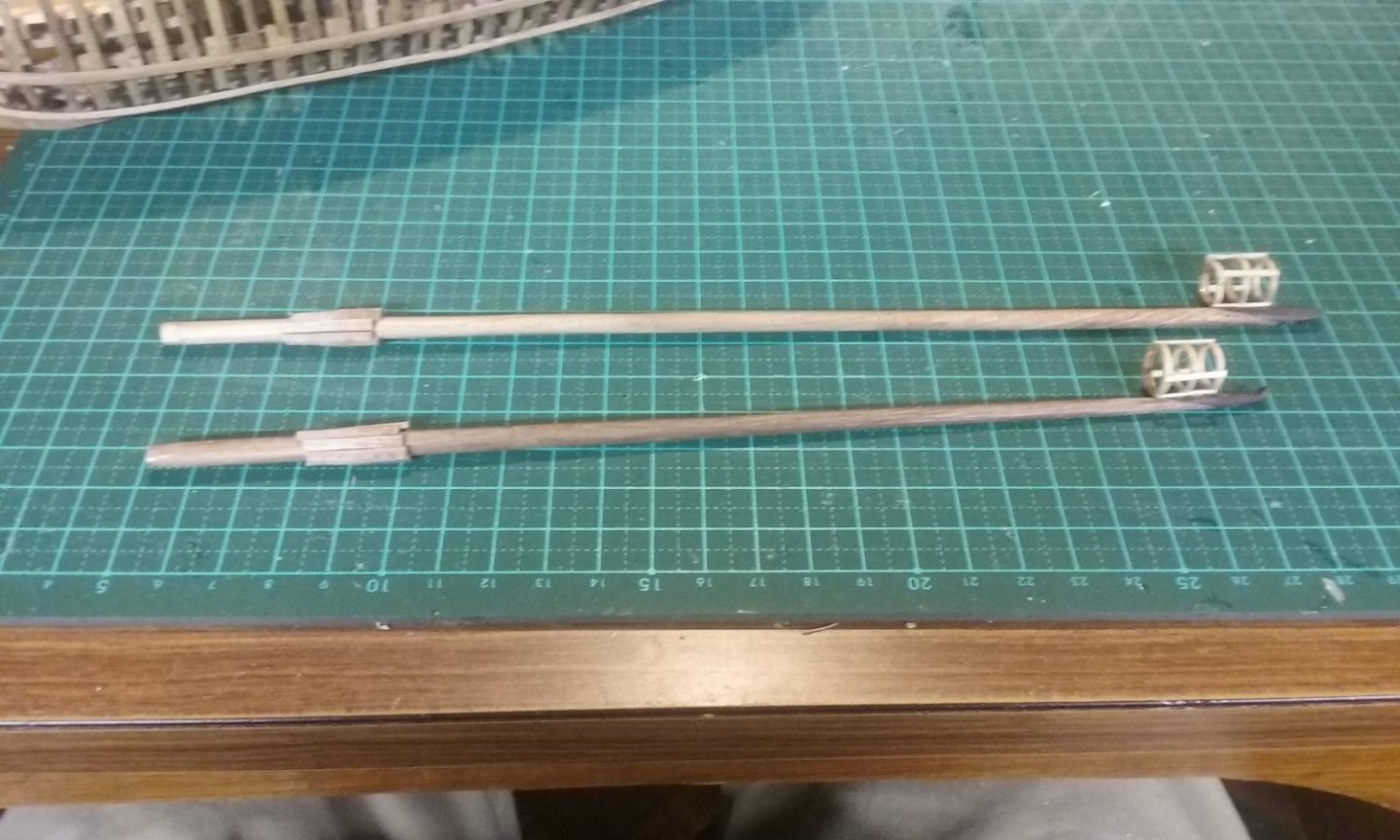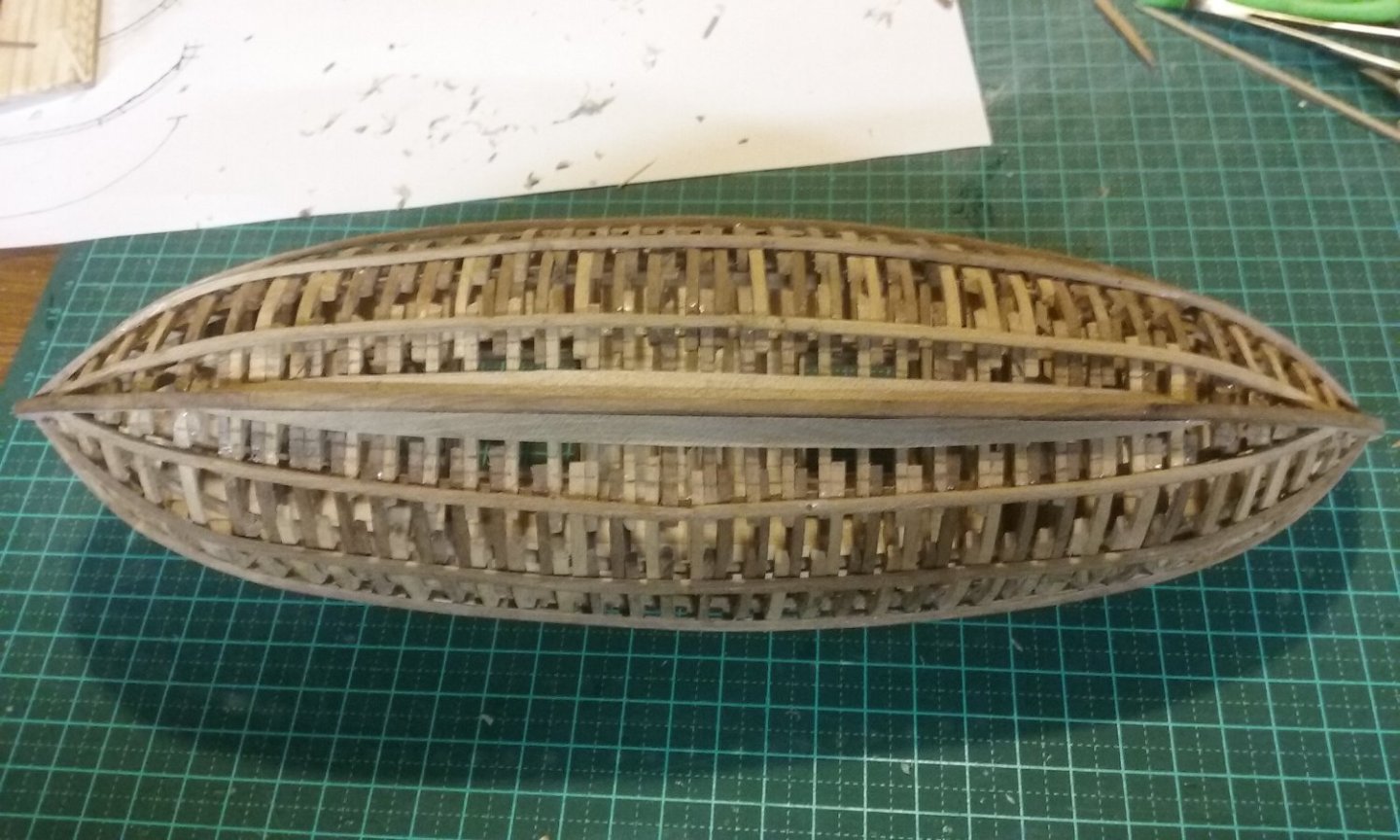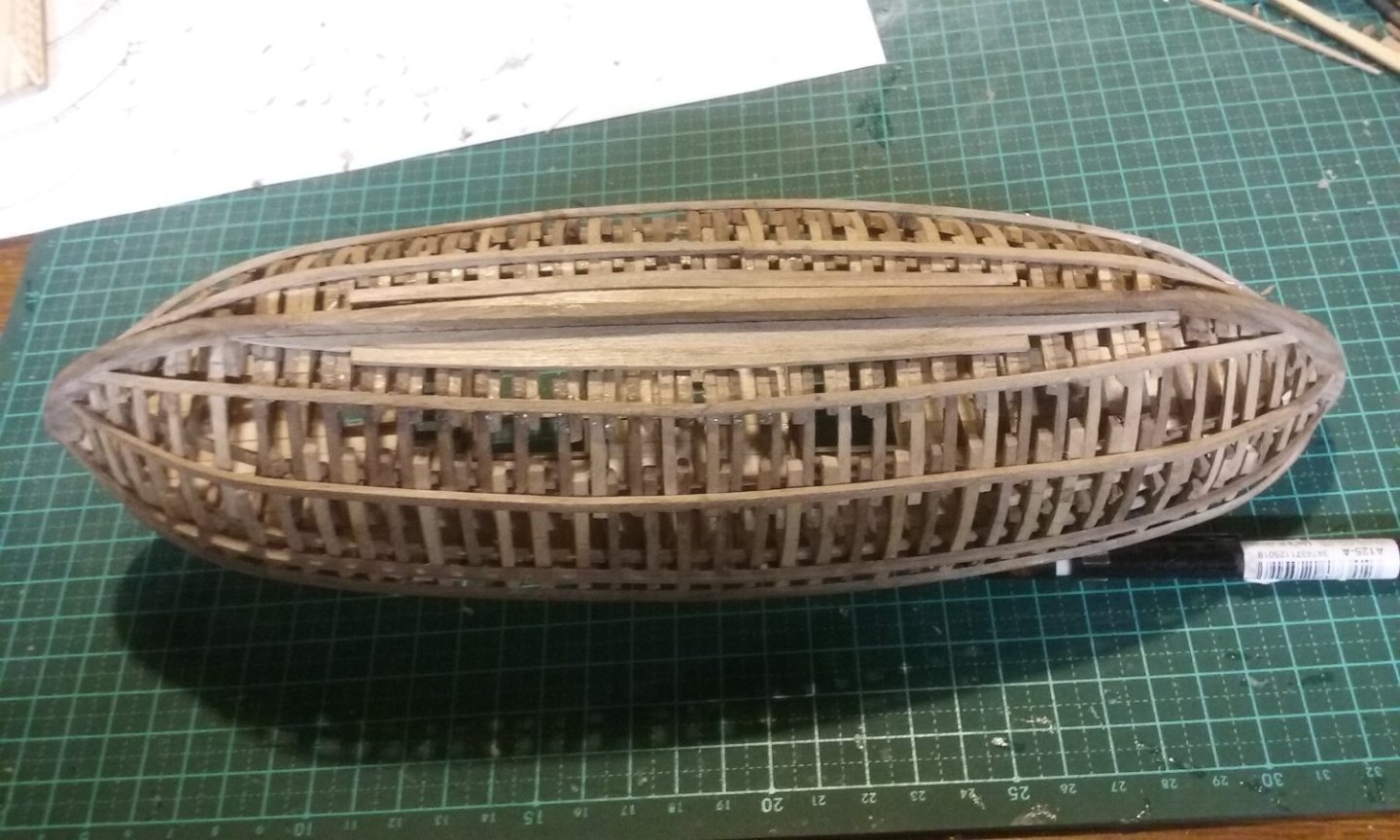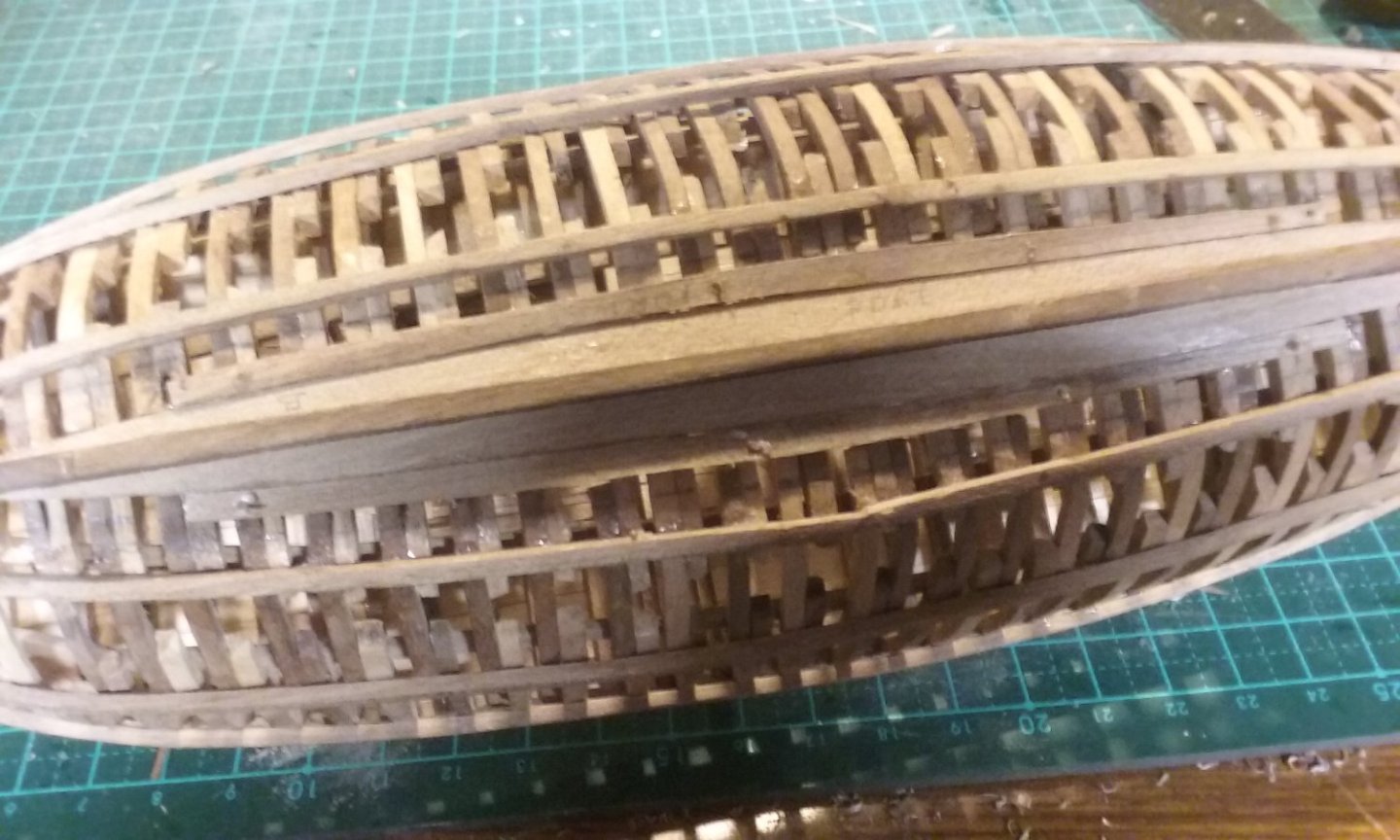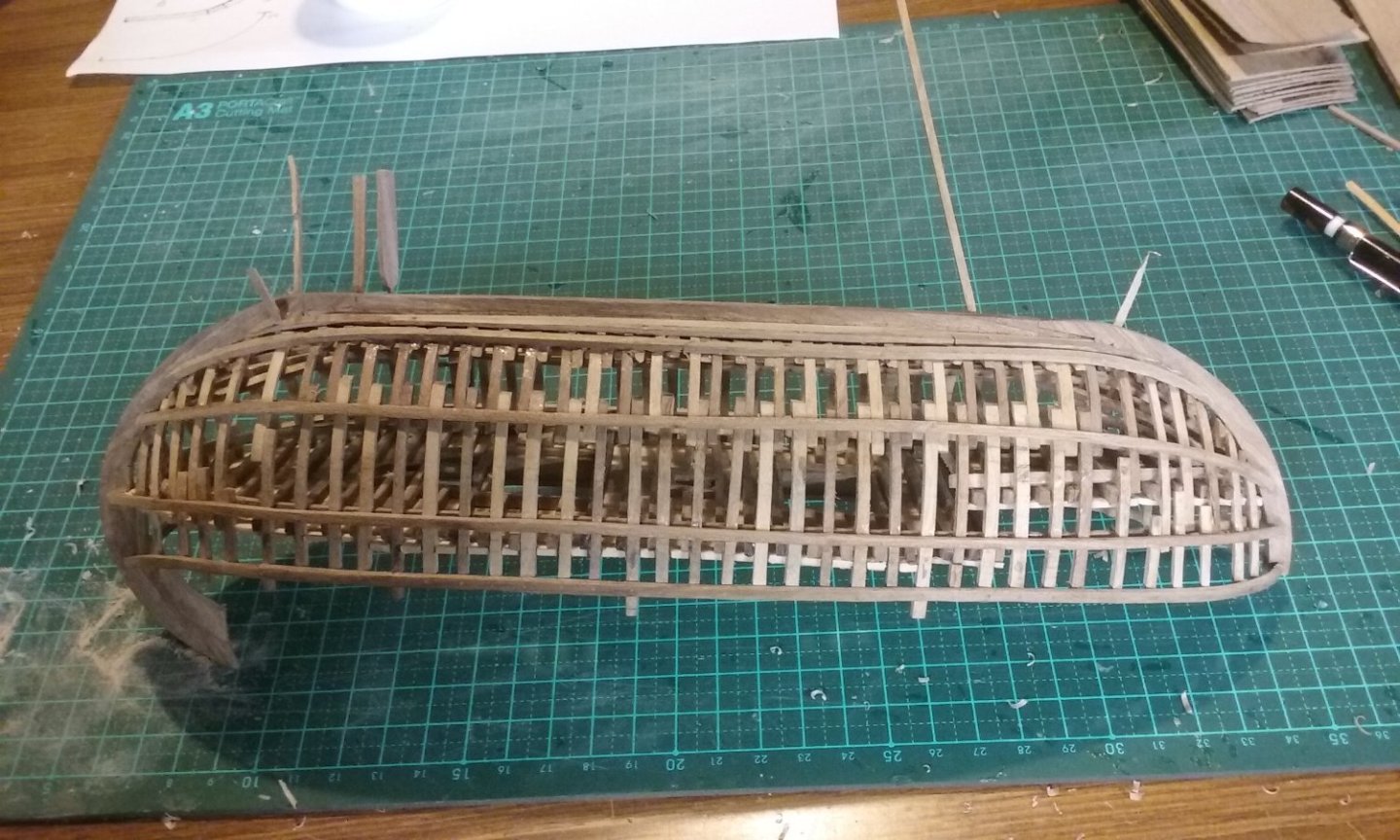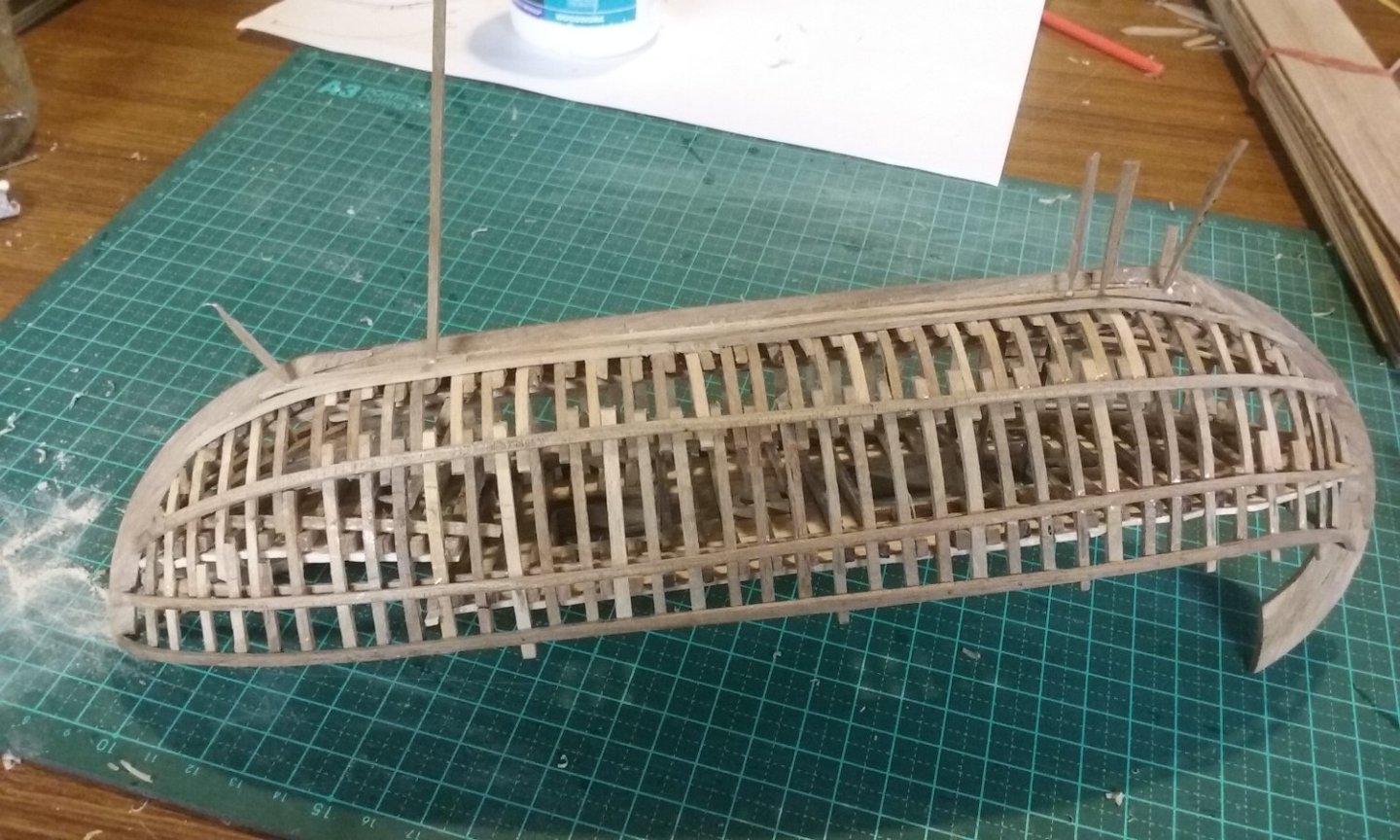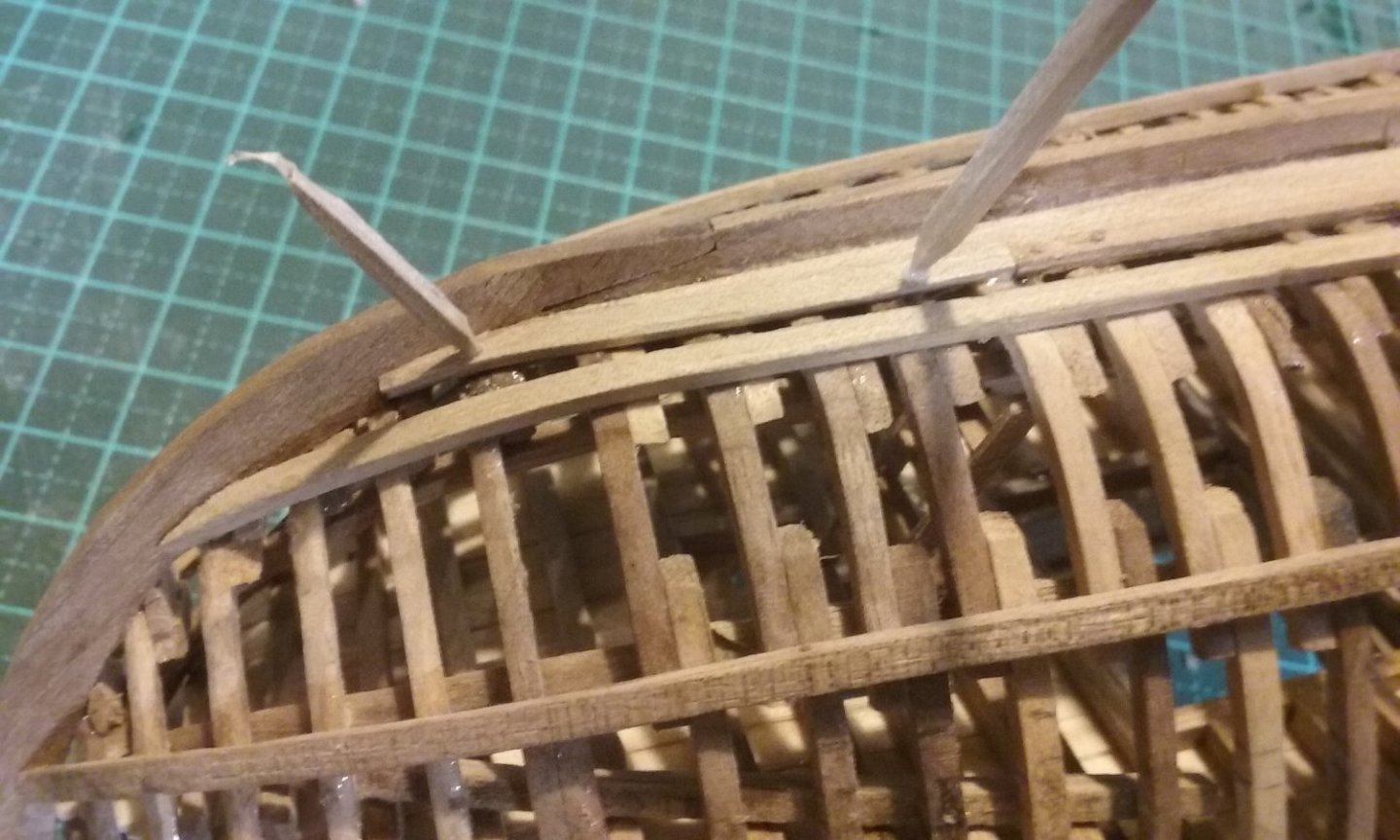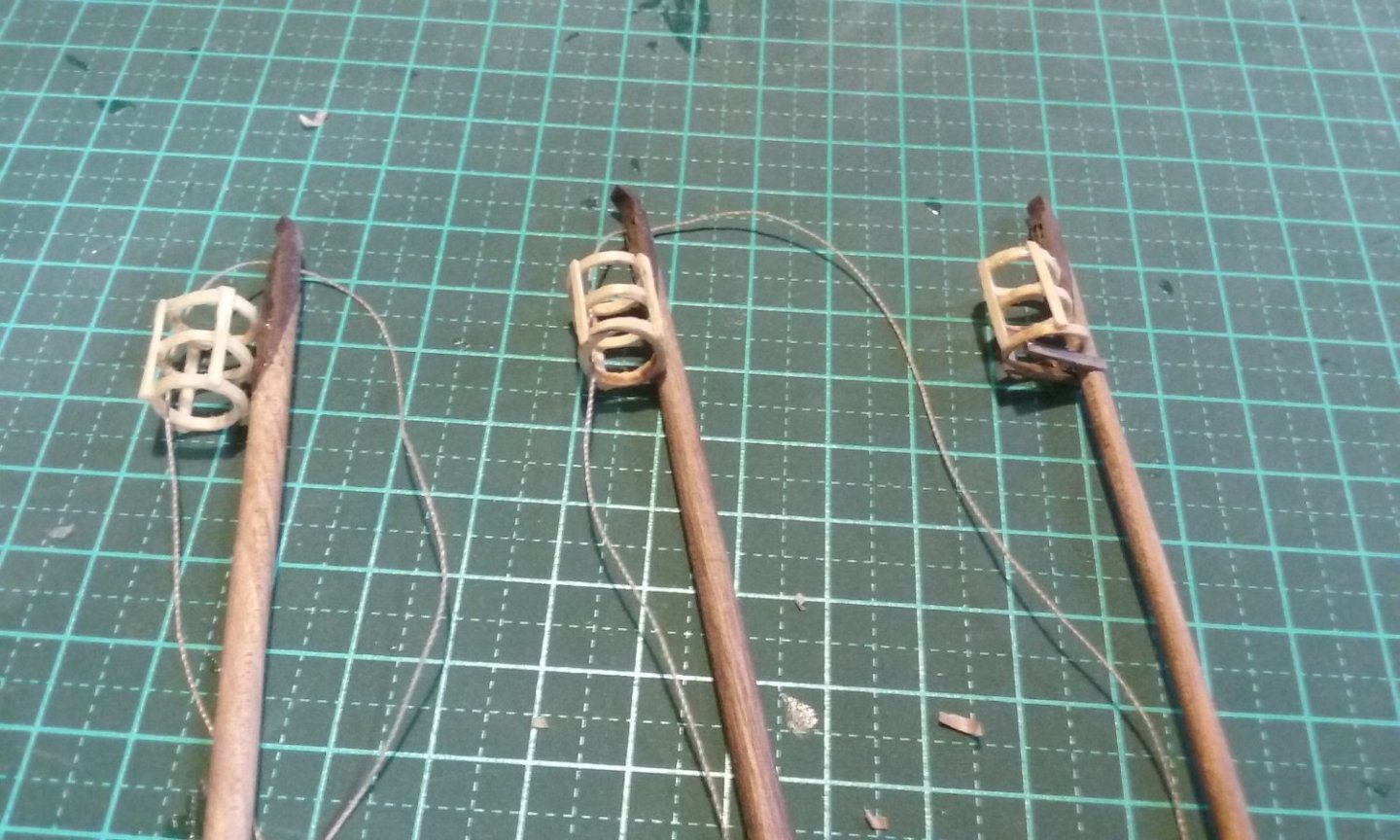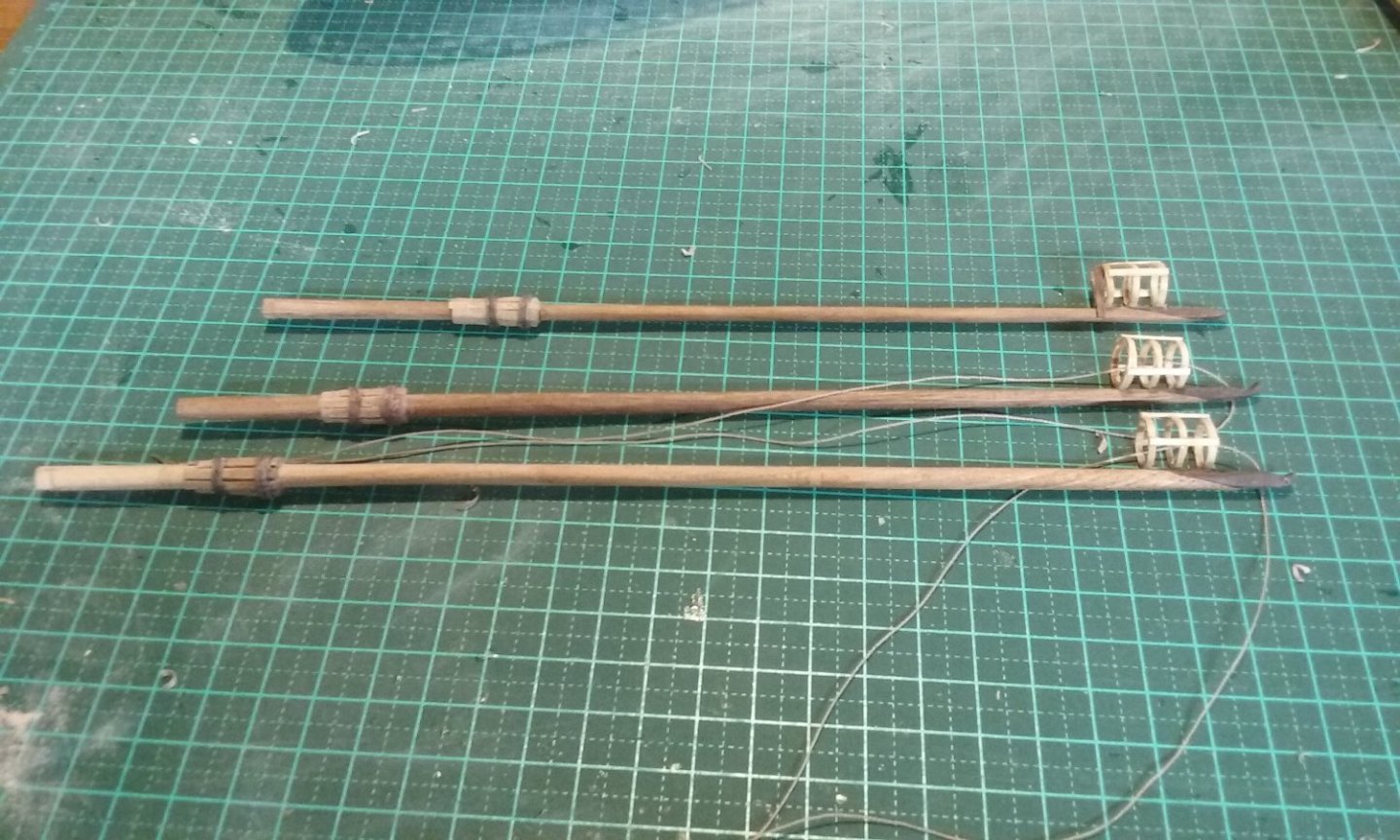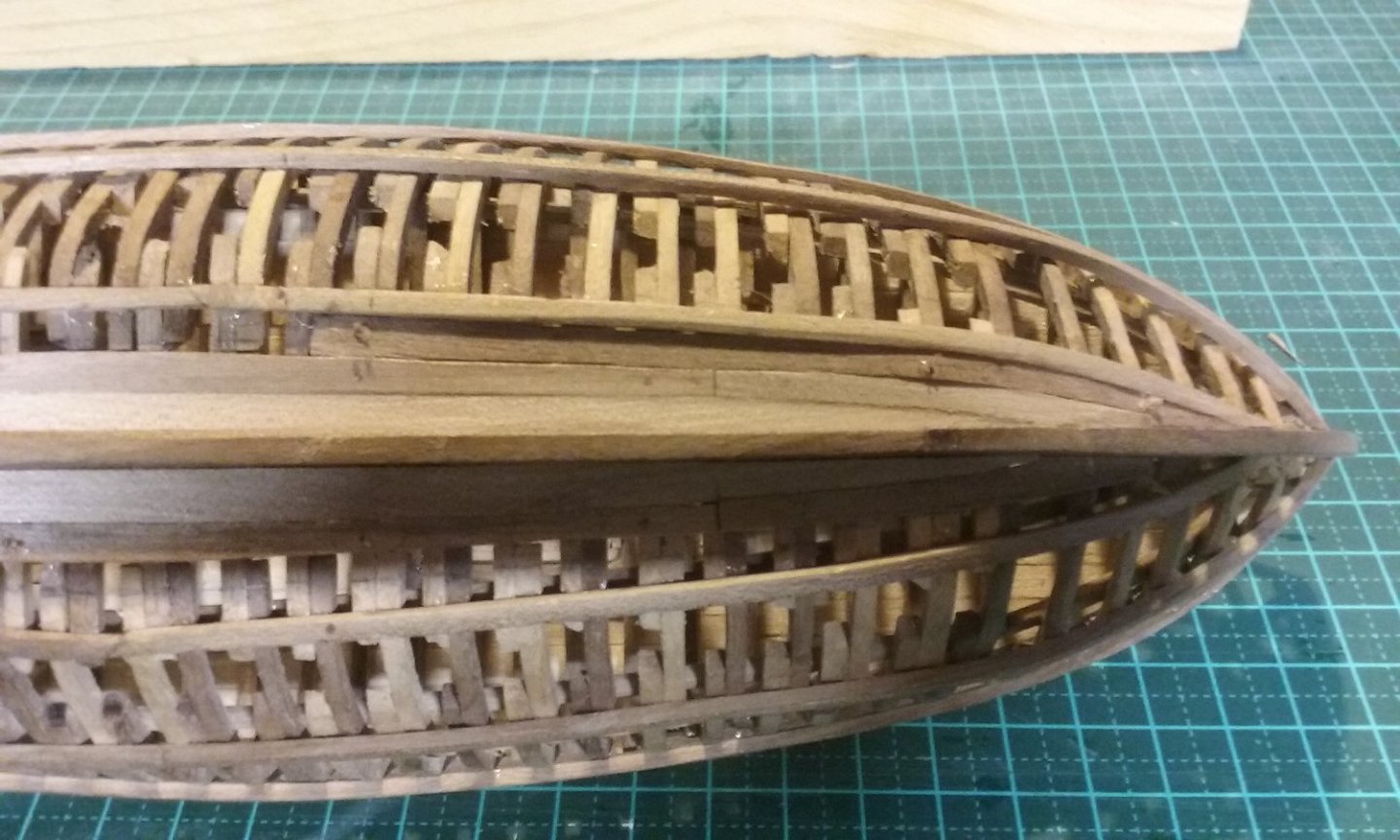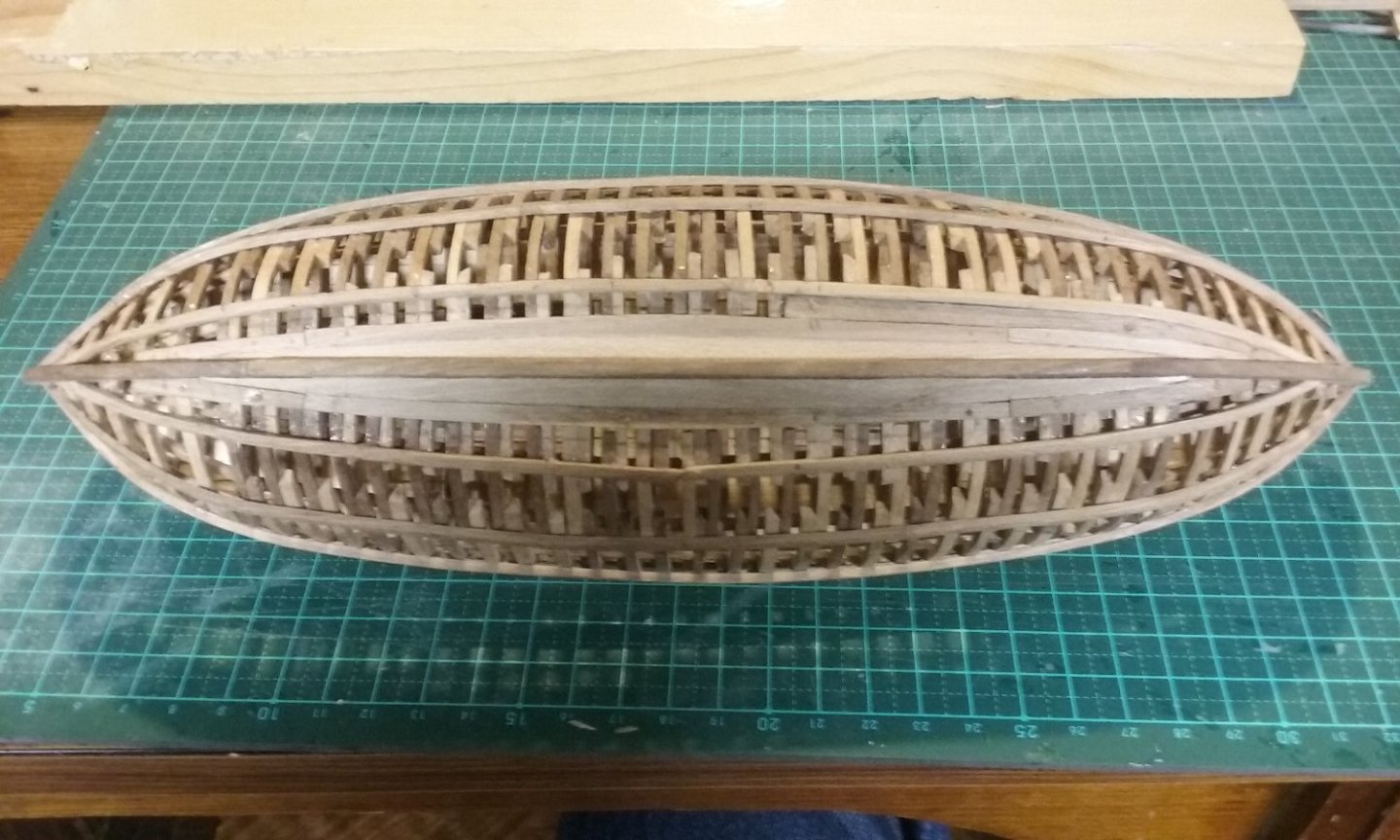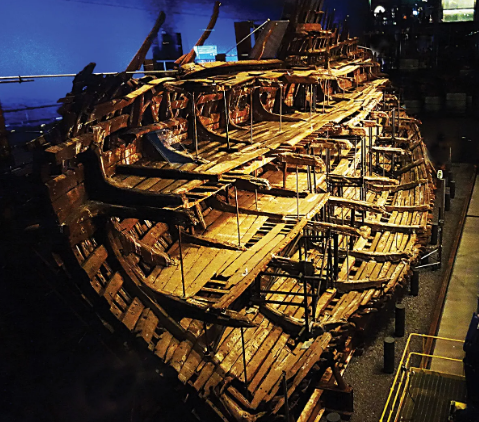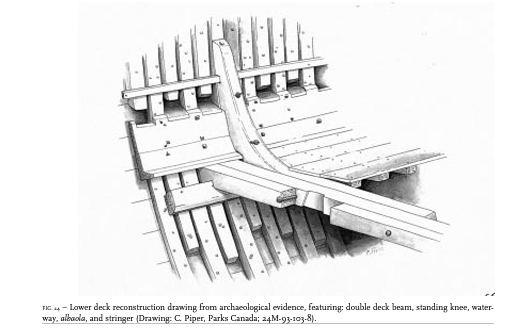-
Posts
7,989 -
Joined
-
Last visited
Content Type
Profiles
Forums
Gallery
Events
Everything posted by Louie da fly
-
Ah. Maybe you need to be a bit more specific, mate. Steven
- 30 replies
-
- roman
- merchantman
-
(and 2 more)
Tagged with:
-
There's a reasonably good video of the building of the reconstruction of Jason's "Argo" in Greece at There was a better one on Youtube, but I can't find it. The good stuff begins abut 8:20. This is a Roman merchant ship of the First century C.E. The Sea People were active 800-1100 years prior. There's a contemporary Egyptian bas-relief showing their vessels, and a a good line drawing copy of that can be seen at https://en.wikipedia.org/wiki/Sea_Peoples#/media/File:Medinet_Habu_Ramses_III._Tempel_Nordostwand_Abzeichnung_01.jpg Dick, I seem to recall reading some years ago that amphorae were stored in ships' holds in a layer of sand. That makes sense - shoving the pointy ends into the sand would keep them upright. After the bottom layer of amphorae, I suppose it would have been a bit like playing Tetris - an experienced supercargo should have been able to do that efficiently. But that's beside the point when we're talking about the effect of all that weight in distorting the hull of the wrecked ship. Steven
- 30 replies
-
- roman
- merchantman
-
(and 2 more)
Tagged with:
-
Exactly. The speculation is at least half the fun.
- 508 replies
-
Neither have I. But allowing for the vagaries of contemporary artists, that doesn't surprise me. There's a very good paper by Shelley Wachsmann of Texas A&M University "On the Interpretation of Watercraft in Ancient Art", which among other things deals with the failings of art, even with the best of intentions, to properly and accurately show vessels in full detail, which has made me very wary of trusting contemporary illustrations too much. Unfortunately, often they're all we have to work from. And of course reconstructions aren't "Primary source" either. They're always modern interpretations from the available information, including extrapolations when the information is not available. Steven
- 508 replies
-
No, I'm not sure. I'd be interested in seeing that information. On the other hand, I'd also like to see what evidence that assertion is based upon. Unless there's something contemporary written down like "wonderful new invention - drop planks make it so much easier to plank the bow and stern", or some archaeologcal evidence that ships before that time didn't have drop planks, and after that time they did - but most shipwrecks I've seen are missing the bow and stern strakes, either completely or partially, so hard evidence is likely to be a bit thin on the ground (or the seabed, as the case may be), so it might be a moot point. In the meantime I'm getting valuable practice at making and installing drop strakes, and in any case the hull will be painted black, so they won't be visible. I'm doing this for myself more than for the model. One thing I can tell you from experience, though, is that clinker built ships wouldn't have had them. It's just not feasible, as I found out when I tried it. Steven
- 508 replies
-
Planking - that and rigging are my two biggest bugbears - and with a lateener, the rigging is a lot simpler, allowing the planking on this model to be the hardest part - at least for me! Bilge planking - up to the wale at the turn of the bilge The same view with different lighting - shows the amount of sanding I'm going to need to do. Around the turn of the bilge After bending the strakes to shape, I use treenails to hold them tight to the frames. Drop planks at bow and stern I'm still not terribly confident I've got my head around drop planks, despite having used them on previous models. Basically just muddling through and hoping I've got it right. Fortunately it'll all be painted black anyway, so though this is a learning experience, any mistakes I make won't be glaringly obvious. This last one is a double dropped plank, and I'm probably doing it wrong. Any comments or suggestions welcome, but I'll only use them for future builds - I've already committed myself on this one and I'm not prepared to remove this and do it again. Not this time, anyway. Steven
- 508 replies
-
Oh, yes! Looking forward to Woodrat's magic on yet another amazing build. Steven
- 30 replies
-
- roman
- merchantman
-
(and 2 more)
Tagged with:
-
For a very explanatory explanation of the method of rudder attachment, see posts from # 124 onward at I don't think there is. I've been interesting myself in Viking ships for decades and I can't think of any evidence for them having reef points on their sails. There are other very interesting things about their sails - do a google image search for Viking ship stones and you'll see a lot of standing stones with ships on them, many under sail - but as far as I can recall, no reef points. The earliest representation I know of them is the town seals of La Rochelle (c. 1200) and of Hastings (13th century) After that they become common until at least the first half of the 15th century - see post #165 at for more discussion on this - and then - yes, they unaccountably vanish, to be replaced by bonnets, but then reappear in the 17th century. Don't ask me why, I don't know. The model is looking very good, and your inquisitive attitude to the historical details is laudable. Keep it up. Steven
- 27 replies
-
- Slavic Longship
- Falkonet
-
(and 2 more)
Tagged with:
-
Me neither. I would be interested to see any archaeology of vessels which are definitely known to be Slavic, just out of interest and to see how they compare with definite Viking vessels, but so far I've never come across anything. Exactly. Ok. That makes sense. I do have a bit of an issue with the thickness of the shields that are usually provided with kits. The real ones were very thin; I do understand the practicalities with supplying anything that thin in a kit, but it just niggles me a bit. When I built my dromon model I put a lot of work into making the shields as thin as I could - I experimented with card, paper, tinfoil, all kinds of things. The other problem was I didn't want them just flat, but bowl-shaped, as was common among Byzantine round shields. I ended up casting them in "car-bog" (using a plaster mould) and it seems to work pretty well. The spiral pattern was very common during the Viking period - not only among the Vikings, but throughout Western Europe, so you wouldn't go far wrong doing that. Steven
- 3 replies
-
- Kit review
- Viking Longboat
-
(and 1 more)
Tagged with:
-
Wonderful work, mate! A thing of beauty and a joy forever. Steven
- 134 replies
-
- sea of galilee boat
- SE Miller
-
(and 1 more)
Tagged with:
-
Well, you've certainly learnt some of the most important lessons in the wonderful world of wooden ship modelling! Another lesson I find very valuable is that wood is a very forgiving medium. Even when something breaks you can often just make a replacement or perhaps glue a new bit on. For a beginner in wood modelling, you certainly picked one of the most difficult to plank. Have a look at some of the other longship build logs - they often have great trouble with alignment of the strakes. But in my humble opinion you're doing a pretty impressive job of it. Keep up the good work. Steven PS: I don't know where you got your mini-clothes pegs but I get mine (and I find them VERY useful) from craft or art supplies stores. Maybe you could look there for more. Steven
- 27 replies
-
- Slavic Longship
- Falkonet
-
(and 2 more)
Tagged with:
-
The reason what looks like a standard Viking longship has been described as Slavic is perhaps a spin-off from a long-standing argument between Russian/Slavic and Western European historians and archaeologists - the Russians tend to assign Slavic origins to early mediaeval settlements in Russia such as Novgorod, Kiev etc. while those of Western European (and of course particularly Scandinavia) assign them to the Vikings. The answer is probably a mix of both. Certainly the Vikings, particularly the Swedes, traded down the rivers of Russia - to Constantinople, Great Bulgaria and even to Arab settlements. Personally I don't care who founded what, but perhaps this is why your model is described as Slavic. Unfortunately I'm not at all familiar with genuinely provable archaeological finds of Slavic ships, so I can't say for sure whether the Slavs also had ships that looked like this. It's certainly possible, but I just don't know. This looks like a nice model - I'll be interested to follow your build log when you start it. Am I right in thinking the shields are to be of card? Or have I misinterpreted the above sentence? The reason I ask is that card is probably about the right thickness for shields to the scale you're working with (they were usually quite thin - maybe 7mm (about 1/4") thick at the outside edge). Or perhaps it's the template that is heavy paper and the shields are of wood? I don't know what designs they've given you for shield decoration, but you might like to look at this site for more information before you start painting - https://www.scribd.com/document/497550805/Viking-Shields Yes, Alfred is the only English king who has ever been described as "The Great", and I think his epithet was well-earned. He not only defeated the Vikings under Guthrum and brought peace to his realm, he promoted learning and came up with a political solution that brought stability for quite a long time and gave the English inhabitants of Britain the chance to recover and rebuild. Quite a man. Best wishes with the build. Steven
- 3 replies
-
- Kit review
- Viking Longboat
-
(and 1 more)
Tagged with:
-
Mast wedges under way for the fore and middle masts And all three complete As the halyards have to go through the floors of the tops, I've put temporary halyards in so I can locate the supports (equivalent to crosstrees and trestle trees). Note that I've started putting them in on the mizentop. I've finally begun planking the hull. Because I couldn't clamp the strakes I had to pin them in place with treenails. Steven
- 508 replies
-
Very impressive work. I've tried a couple of models built on a plug and always found difficulty in getting the two halves exactly the same. You seem to have succeeded admirably. And you've done a superb job on the (difficult) rounded stern. Very precise work. Steven
- 38 replies
-
- Santa Maria
- Nao
-
(and 1 more)
Tagged with:
-
I love your imaginative solutions to the problems you encounter. It's all looking very good, mate! Steven
- 134 replies
-
- sea of galilee boat
- SE Miller
-
(and 1 more)
Tagged with:
-
This is a very interesting kit, and an interesting build. I'm pulling up a chair and opening the popcorn.
- 27 replies
-
- Slavic Longship
- Falkonet
-
(and 2 more)
Tagged with:
-
The Villefranche wreck (Genoese carrack, sank 1516), also known as the Lomellina, had internal planking from the bilge up to the level of the lowest deck. It was not planked internally above that level. The English Mary Rose (sank 1545) was fully planked internally The San Juan (Basque whaling ship, sank sometime around 1550) was not internally planked So it appears that not all ships in this period were internally planked. This may have been a time of transition - and it appears that the more important ships, and later ships, were fully planked inside, but not those less important or earlier in the 16th century. Your galleon is both later and more important, so I think it probably would have been planked inside. Steven
-
Yep. There are certain fungi that work as well as char cloth, too - the ones that grow on the trunks of trees. Apparently you grind it up when it's dry and then (and I forget what comes next). I've done it with char cloth and tow. When the spark hits the char cloth it forms a small glowing point which you then wrap the tow around and blow like the blazes (sorry!). Dry grass works as a replacement for tow, too. I was once in a mediaeval gathering over the Easter weekend and we had to douse our fires when we'd finished with them (it was in a pine forest!). I decided to get some practice lighting with flint and steel every time we re-lit the fire- got fairly good with it, too. But hard on the knuckles - you lose skin either from the steel slamming against them while you hold the flint, or (worse still - it's sharp) from the flint itself. This video is very enlightening - I wish I'd seen it before Steven
-
Welcome back, Silverman! Perhaps the bowsprit could go through the foredeck and be fixed to partners beneath? I realise that area is storage space, but the bowsprit wouldn't take up much room, and let's face it, knightheads would have gone through the deck as well, so there's very little difference when all is said and done. And you wouldn't have to show the partners as they'd be hidden by the deck. However, I suppose the bowsprit might get in the way of the door; it's a bit hard to tell from the photos how far back it would intersect with the keel. That mast support is a very interesting feature. I don't know an English equivalent term for it. Steven
About us
Modelshipworld - Advancing Ship Modeling through Research
SSL Secured
Your security is important for us so this Website is SSL-Secured
NRG Mailing Address
Nautical Research Guild
237 South Lincoln Street
Westmont IL, 60559-1917
Model Ship World ® and the MSW logo are Registered Trademarks, and belong to the Nautical Research Guild (United States Patent and Trademark Office: No. 6,929,264 & No. 6,929,274, registered Dec. 20, 2022)
Helpful Links
About the NRG
If you enjoy building ship models that are historically accurate as well as beautiful, then The Nautical Research Guild (NRG) is just right for you.
The Guild is a non-profit educational organization whose mission is to “Advance Ship Modeling Through Research”. We provide support to our members in their efforts to raise the quality of their model ships.
The Nautical Research Guild has published our world-renowned quarterly magazine, The Nautical Research Journal, since 1955. The pages of the Journal are full of articles by accomplished ship modelers who show you how they create those exquisite details on their models, and by maritime historians who show you the correct details to build. The Journal is available in both print and digital editions. Go to the NRG web site (www.thenrg.org) to download a complimentary digital copy of the Journal. The NRG also publishes plan sets, books and compilations of back issues of the Journal and the former Ships in Scale and Model Ship Builder magazines.




